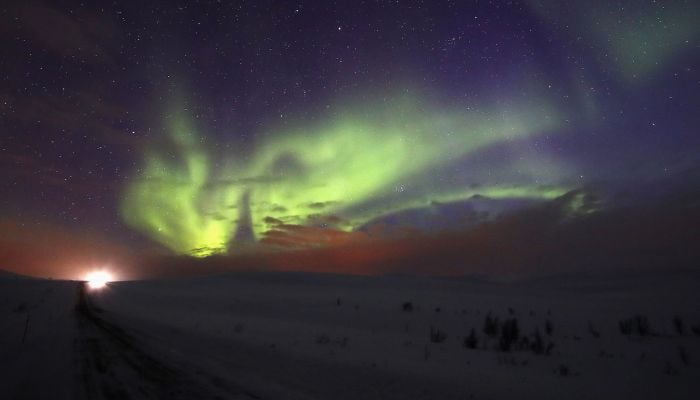Northern lights dazzle Arizona in rare solar storm display
G4 geomagnetic storm sparks northern lights as far south as Arizona
November 12, 2025

Arizonans witnessed a spectacular and rare display of the northern lights on Tuesday night, November 11, 2025, a phenomenon driven by one of the most solar storms to hit Earth in recent years.
The celestial event formally known as the aurora borealis, is typically reserved for latitudes much farther north.
But, aurora chasers have started spotting the event across the state from Seligman and Cottonwood to New River.
While many observers have reported watching the lights from the naked eye, many of the stunning photographs were captured using smartphone’s night mode and special cameras which helped bring out the vibrant red and pink hues that dance across the sky.
The phenomenon is caused by a severe G4-class geomagnetic storm as reported by National Oceanic and Atmospheric Administration (NOAA).
Solar storms are ranked on a scale from G1 (minor) to G5 (extreme). The G4 storm was so intense that it pushed the auroral oval far south, surprising even experts as the lights were not forecast to be visible in Arizona.
Reports of aurora sightings came from as far south as Alabama.
Why aurora happened now
Currently, the sun is at the peak of its 11-year solar cycle which is referred to as a period of maximum activity.
With this increased activity, there are more chances of intense solar storms that can lead to supercharge the northern lights and make them visible in unexpected places.
Auroras occur when the earth 's magnetic field interacts with the charged particles from the sun travelling through space. They energize gases in the atmosphere causing them to glow.
Will there be more chances to see the northern lights?
As the active phase of the sun is expected to continue through the end of the year, sky gazers may have more opportunities to see the aurora.
Forecasts for potential northern visibility can be monitored on NOAA’s space weather prediction center website.
How to watch the northern lights?
For the best viewing experience, experts suggest:
- Find a location away from city lights.
- Visit a local or national park for darker skies.
- Check the local weather forecast, as clouds may obstruct the view.
While Tuesday’s event was a surprise for the Southwest, NOAA’s current forecast for the coming nights suggests the northern lights may be visible across more than 20 states in northern U.S.



